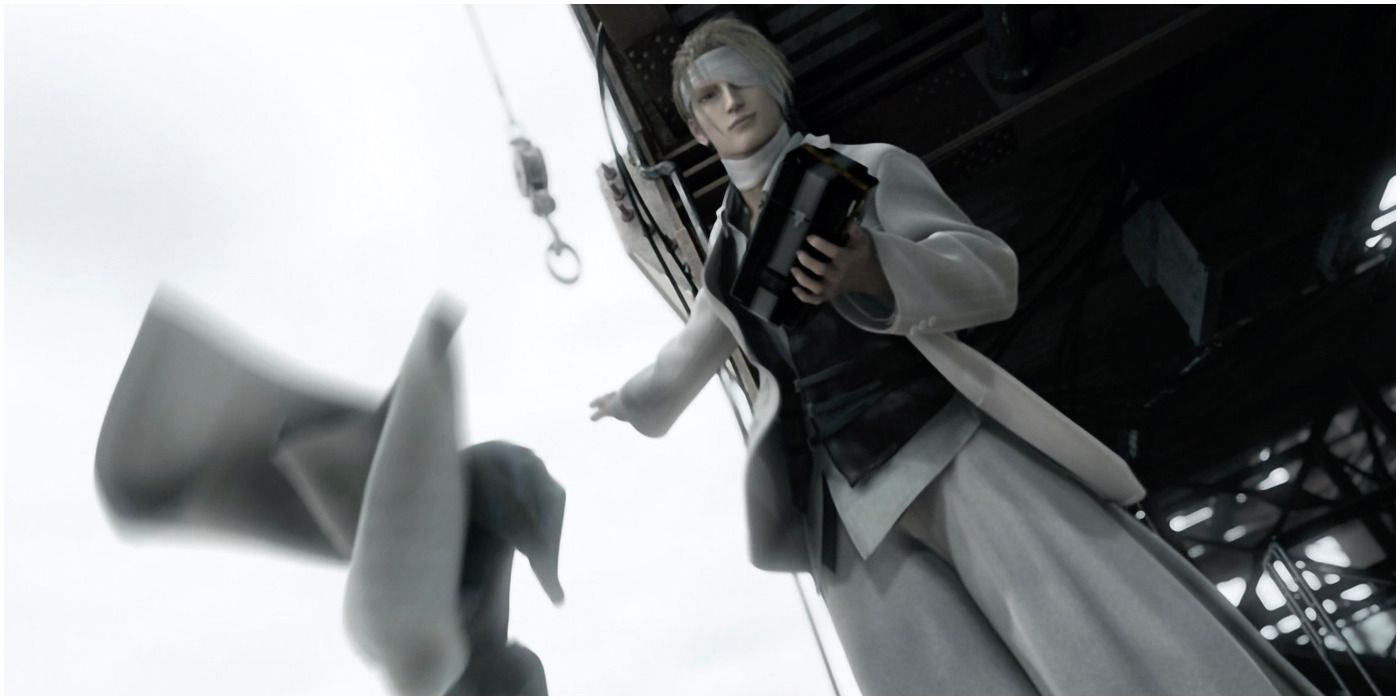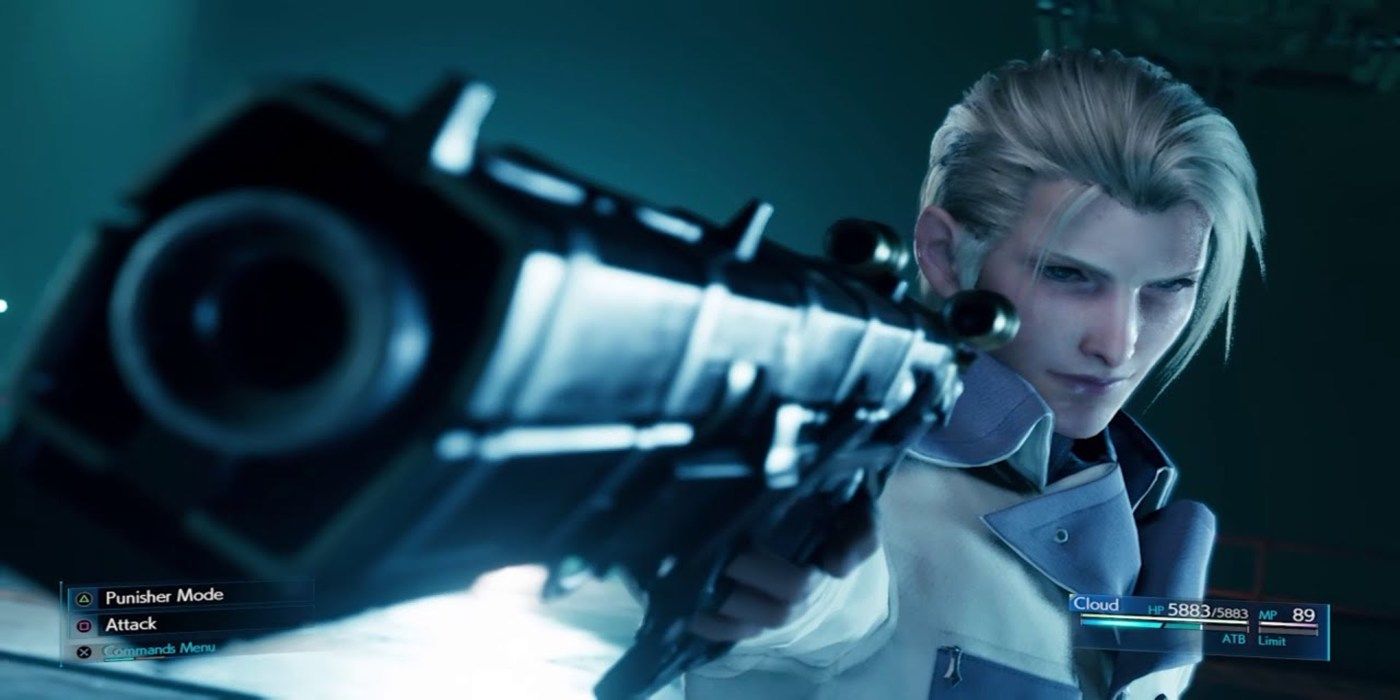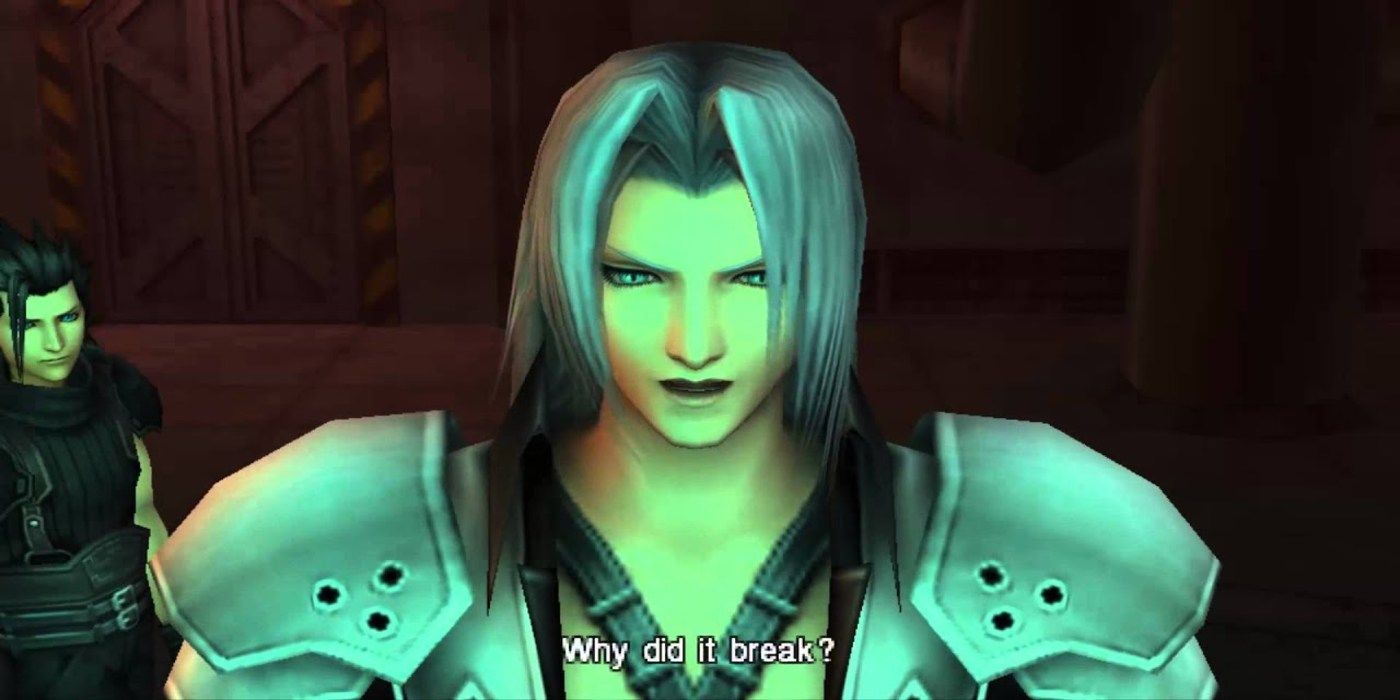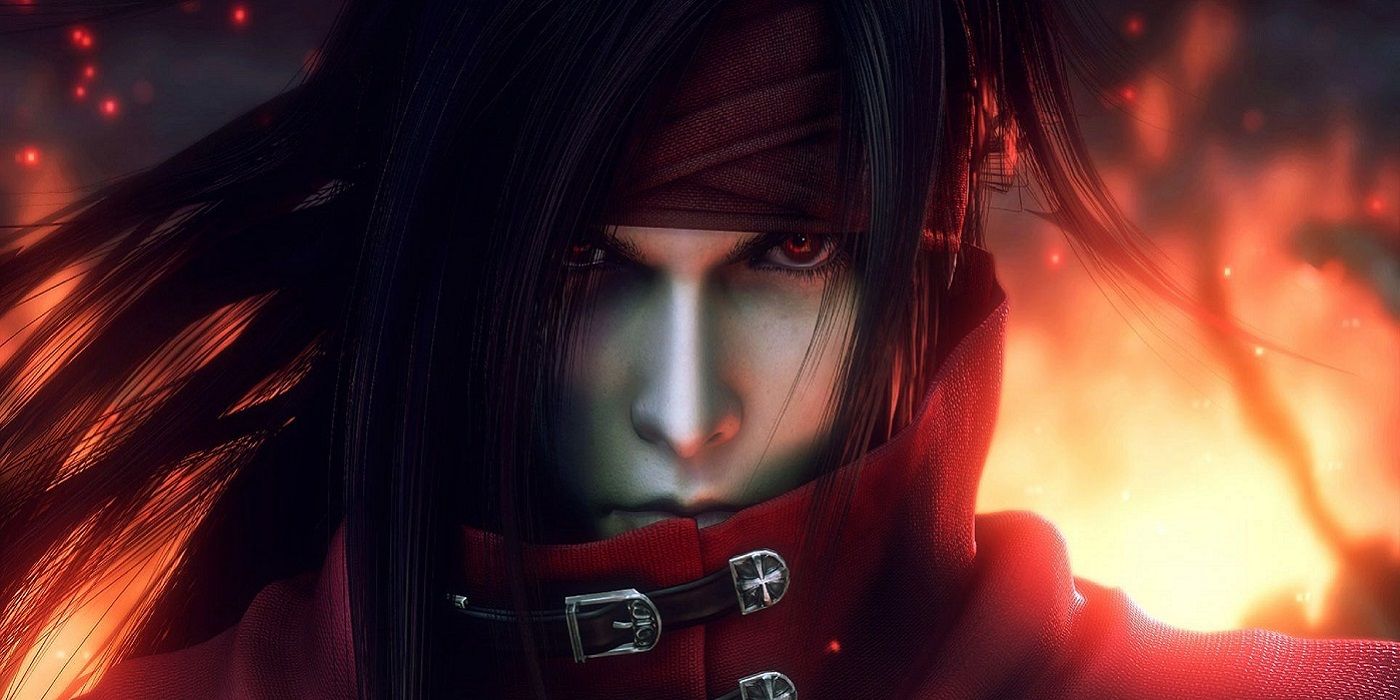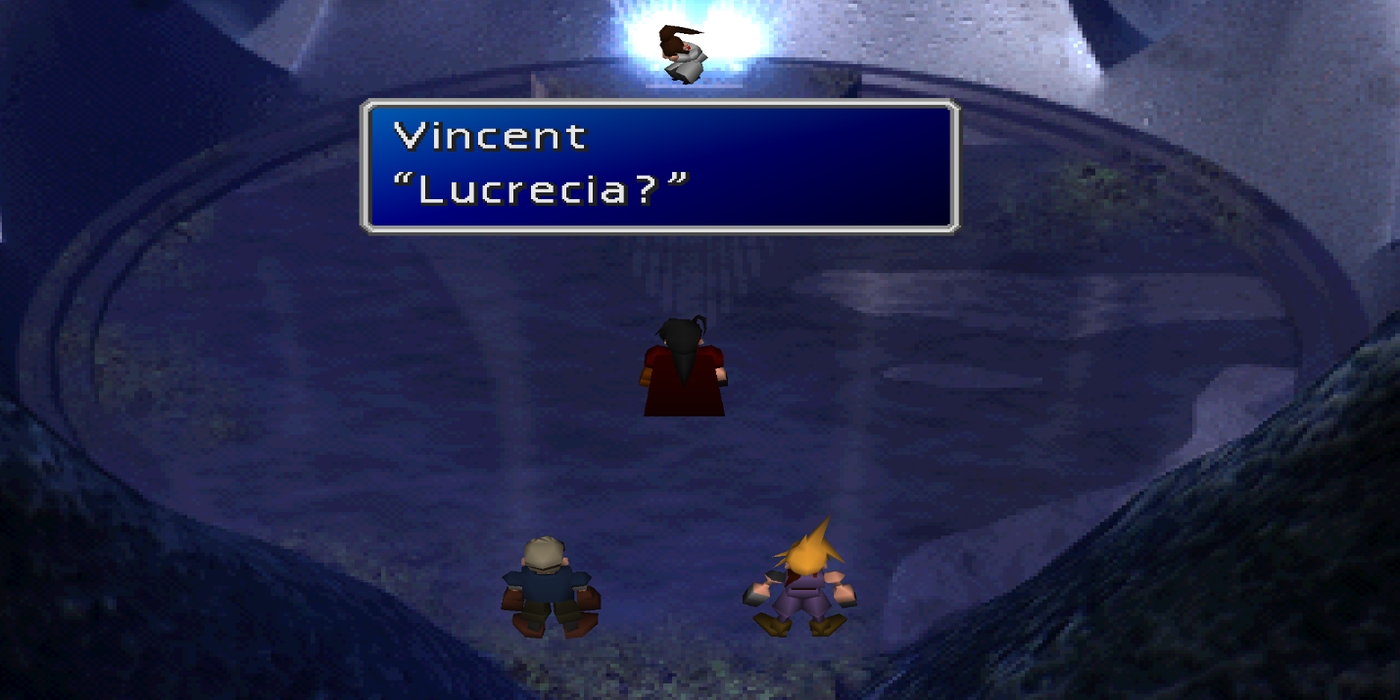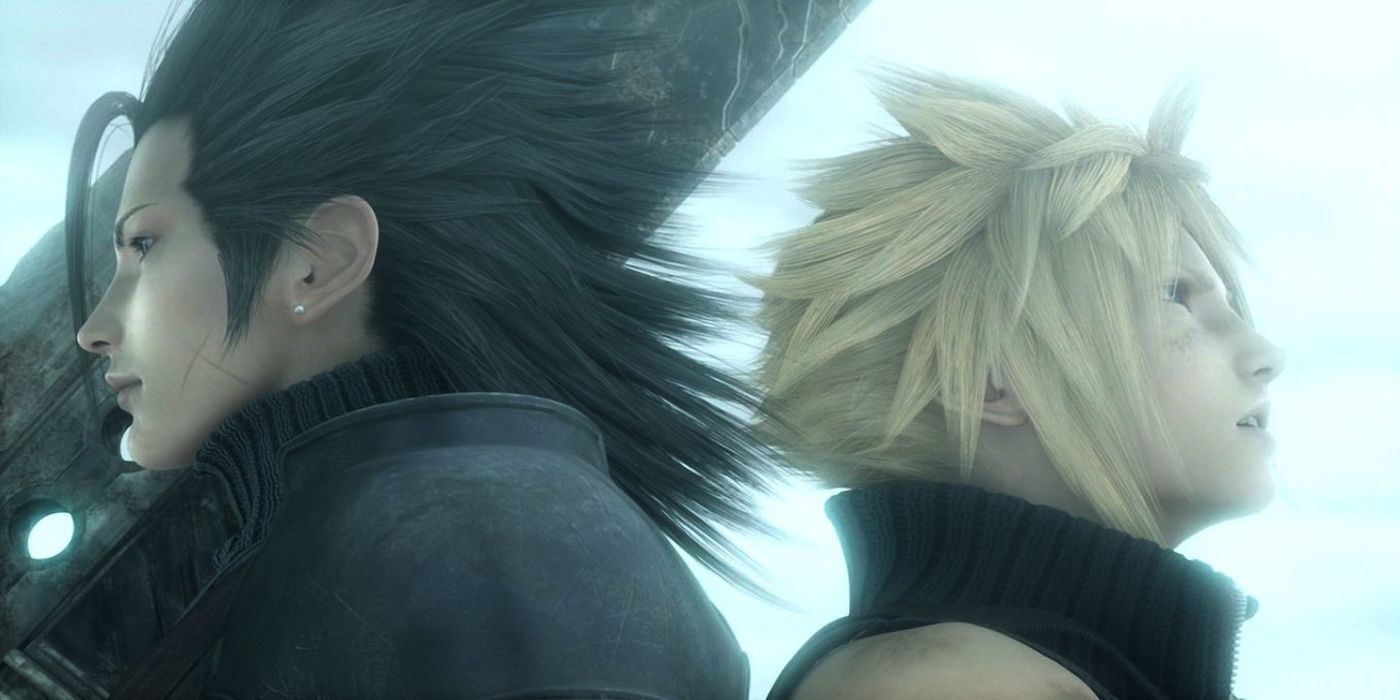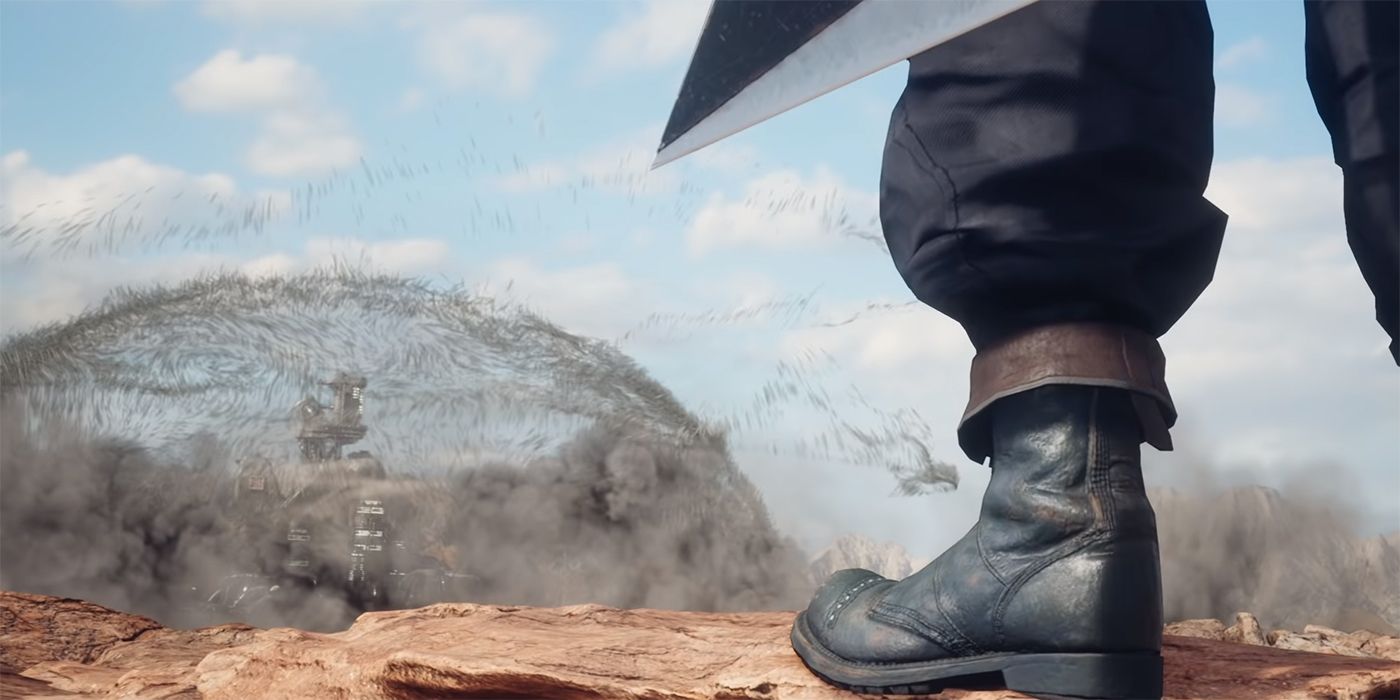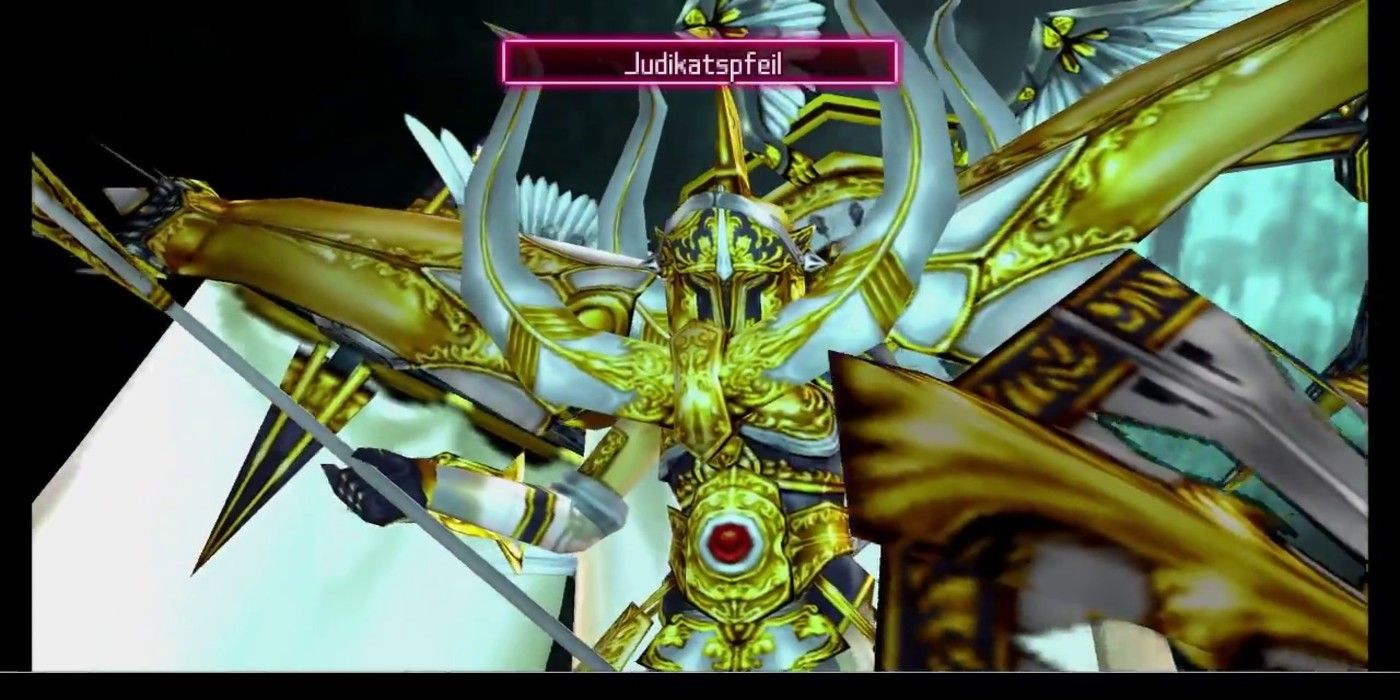Released in 1997, the original Final Fantasy VII very quickly became the signature Final Fantasy game internationally, and not just because it was the first entry in the franchise to release in Europe. Cloud Strife’s personal vendetta against Sephiroth, Aerith’s tragic death, and the Materia of it all elevated Final Fantasy VII into something larger than the franchise itself.
A few years after the release of Final Fantasy VII, Square would begin expanding PS1 game’s canon, making some massive changes in the process. From Advent Children bringing major characters back from the dead, and Crisis Core recontextualizing some of the most important moments in FFVII’s canon, the Compilation of Final Fantasy VII turned the story completely on its head.
10 The History Of The Buster Sword (Crisis Core)
The Buster Sword is an iconic part of Final Fantasy VII's iconography, but it also represents a part of Cloud that's not truly him. The Buster Sword is a meaningful sword to Cloud in FFVII, but only in the sense it's tied to Zack's death– in practice, the guy basically just blunders the blade off his dead friend's body. Which is fair, mind, but still morbidly real.
Advent Children recontextualizes the passing of the Buster Sword, but Crisis Core goes one further by giving it a rich history through Angeal– a character who carries an extremely deep respect for the Buster Sword. Angeal passes the Buster Sword on to Zack who then passes it on to Cloud who then leaves it to rot in a desert.
9 Rufus’ Survival (Advent Children)
While Advent Children does indeed have its strengths, it's for the most part a fairly mediocre film that tells a story that didn't need telling in one of the blandest ways imaginable. Arguably the worst aspect of the movie is its approach to death. Final Fantasy VII was very respectful and realistic in its depiction of death, but AC likes to play fast and loose.
Notably, Rufus Shinra, a character who dies on-screen in an FMV, comes back to life. He tries to explain his survival to Cloud, but it's brushed off for a joke. Not only is the joke not funny, the scene essentially spits in the face of both Aerith and Zack, who died very real deaths in FFVII.
8 Rufus’ Ties To AVALANCHE (Before Crisis)
Advent Children was only the tip of the iceberg for the Shinra President as Rufus' role in Final Fantasy VII's lore only gets weirder. Along with surviving the events of Final Fantasy VII more or less fine, Before Crisis– the first entry in the Compilation of Final Fantasy VII– ends up revealing that Rufus was bankrolling AVALANCHE all along.
Funding AVALANCHE from the shadows, Rufus wanted to create political instability within Shinra to oust the President. Unfortunately for Rufus, President Shinra discovers the plot and exiles his son before anything dire can happen. Only for him to have a run-in with Sephiroth later, of course.
7 Nibelheim Incident (Crisis Core)
The Nibelheim Incident is arguably the most important event in Final Fantasy VII, and one the game revisits often. The first time Cloud flashes back, he misremembers everything, putting himself in Zack's shoes. The last time, Cloud comes to terms with the reality of the situation– while Sephiroth nearly killed Zack, Cloud killed Sephiroth, ending the massacre.
Crisis Core changes things considerably, not only by adding Genesis into the mix, but playing up Sephiroth's madness even further. Not just that, Zack ends up having a far more involved role in the Nibelheim Incident that creates some serious inconsistencies with how it was depicted in the original FFVII.
6 Deepground (Dirge Of Cerberus)
This might very well be the worst retcon on this list, not because it's thematically inappropriate like some of these others, but just because it's so aggressively stupid. Dirge of Cerberus always expects the audience to put up with some terrible storytelling (Hojo ain't dead, baby, and Vincent's love interest is a 19 year old in a 10 years old's body,) but the Deepground takes things to an extreme.
It turns out that underneath Midgar was a secret society called the Deepground full of super powered soldiers quietly waiting underneath Shinra HQ. Nothing more needs to be said, really. The Deepground flies in the face of Midgar's culture and is a slap in the face to any realism FFVII had in its depictions of class and socioeconomic strife.
5 Lucrecia, The Dumbest Woman Alive (Dirge Of Cerberus)
The original Final Fantasy VII doesn't focus on Lucrecia on that much, but it does manage to reveal some bits about her past through Vincent. Married to Hojo, Lucrecia fell in love with Vincent, but their relationship ultimately isn't meant to be. Hojo ruthlessly experiments on them both, infecting his and Lucrecia's baby together– Sephiroth– with Jenova's cells.
Starring Vincent as the main character, Dirge of Cerberus finally had the chance to meaningfully expand on Lucrecia only to ruin everything by making her the stupidest woman alive. She actively puts herself and Vincent in danger, essentially going from Hojo's victim to the woman personally responsible for ruining Vincent's life.
4 Zack Fair’s Living Legacy (Advent Children)
Zack Fair's death in the original Final Fantasy VII is impactful not because he cuts down hundreds of men or gives Cloud inspiring last words. Zack's death is impactful because it's a real death. He doesn't die a hero, he just dies, the rain falling on his body and Cloud losing his mind as a result. It's intense and sickeningly real.
Which makes it all the more disappointing that Advent Children twists Zack's death so he's now passing the torch (Buster Sword) onto Cloud. Worse than that, however, is Zack requesting Cloud to become his living legacy, recontextualizing Cloud's psyche from FFVII in a tactless manner.
3 Zack Fair’s Last Stand (Crisis Core)
Although Advent Children ends up retconning in some last words for Zack Fair, there's nothing to indicate he went down fighting a bunch of Shinra infantryman. It's not at all out of the question that Zack was shot and simply left to die, only dying after Cloud. That's blatantly not what happens in the original game, but fine, it's believable enough (but still thematically inappropriate.)
Crisis Core noticeably dramatizes Zack's death even further, having him fight enemy after enemy in an epic wave that results in his death. While this elevates Zack's demise to hilariously antithetical levels as far as FFVII's depiction of death goes, the finale makes use of control in a very clever way– playing up the emotion of Zack's death by forcing the player to experience it themselves. Which is actually very much in-line with the original FFVII's mechanical MO.
2 Zack Fair’s (Not-So) Last Stand (Remake)
The Zack Fair fun doesn't end with Crisis Core as Final Fantasy VII Remake's ending makes very clear. Stepping into what appears to be an alternate timeline, the party walk by a scene depicting Zack Fair's Last Stand. At first glance, it seems to simply be a reference to Crisis Core's now iconic ending, but the details of the event quickly change.
Instead of dying, Zack manages to kill all the Shinra infantrymen coming after him and Cloud. Carrying his comrade, Zack heads towards Midgar, perfectly fine. Time will tell what exactly this cene entails, but one thing is for sure: Zack Fair is about to play an important role in the Final Fantasy VII Remake.
1 Minerva’s Very Existence (Crisis Core)
Because Jenova wasn't enough. At the end of the day, Crisis Core is indeed a good video game and a solid enough prequel to Final Fantasy VII (on a control level, not a thematic one,) but it is extremely derivative of Final Fantasy VII on a conceptual level. Not only is Genesis analogous to Sephiroth, Minerva is basically a walking Jenova reference.
Worse than Jenova, though, Minerva is specifically the goddess of the Earth. She even briefly appears in Crisis Core as part of the story. While she doesn't have a major role, the fact she appears and exists at all does Final Fantasy VII no favors.



